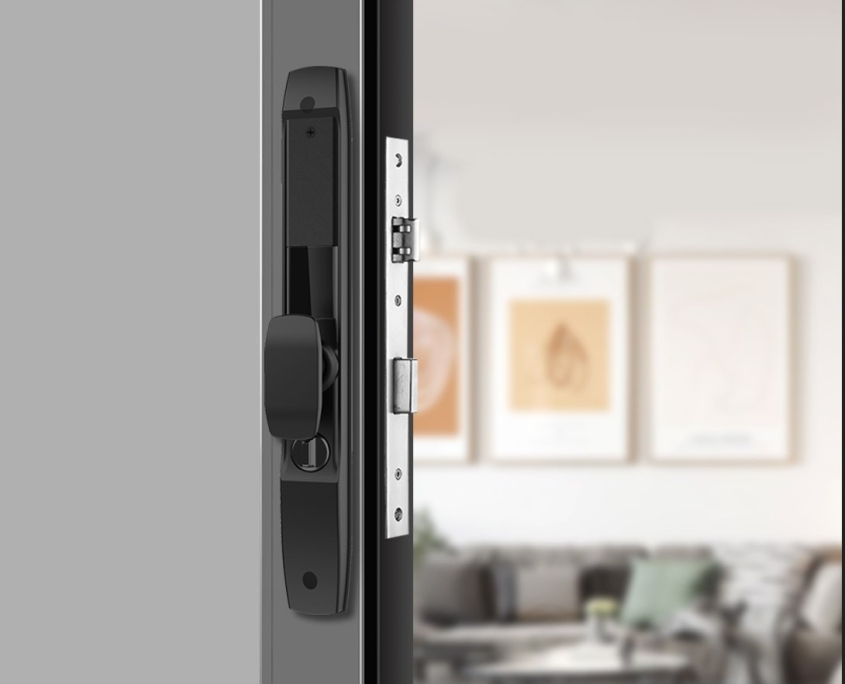How Do Smart Key Locks Work?
Gone are the days of fumbling for keys in the dark. Smart key locks have revolutionized home security, offering keyless entry, remote access, and advanced tracking features. But how exactly do these high-tech locks work?
This guide breaks down:
The technology behind smart key locks
Different types of smart locks & how they function
Security features to look for
Pros and cons vs. traditional locks
1. What Is a Smart Key Lock?
A smart key lock (or smart lock) is an electronic locking system that replaces traditional keys with:
-
PIN codes (keypads)
-
Smartphone access (Bluetooth/Wi-Fi)
-
Biometrics (fingerprint, facial recognition)
-
Voice control (via Alexa, Google Assistant)
-
RFID cards/fobs (keyless entry)
Unlike mechanical locks, smart locks use encrypted digital signals to grant access.
2. How Do Smart Locks Work? The Core Technology
Smart locks rely on three main components:
1. The Lock Mechanism
-
Replaces the traditional deadbolt or latch with an electric motor.
-
When activated (via app, code, or fingerprint), the motor retracts the bolt, unlocking the door.
2. The Connectivity Module
-
Bluetooth (short-range, phone-to-lock connection).
-
Wi-Fi/Z-Wave/Zigbee (remote access via internet).
-
RFID/NFC (tap-to-unlock cards/fobs).
3. The Power Source
-
Most use AA/AAA batteries (last 6-12 months).
-
Some have rechargeable batteries or hardwired power.
3. Types of Smart Locks & How They Operate
| Type | How It Works | Best For |
|---|---|---|
| Keypad Smart Locks | Enter a PIN code to unlock | Rentals, Airbnb |
| Bluetooth Smart Locks | Unlock via smartphone (30 ft range) | Personal homes |
| Wi-Fi Smart Locks | Control from anywhere via app | Remote access needs |
| Fingerprint Locks | Scan fingerprint to enter | High-security homes |
| Voice-Activated Locks | “Alexa, unlock my door” | Smart home lovers |
4. Step-by-Step: How Smart Locks Grant Access
Scenario: Unlocking via Smartphone
-
You approach the door – Your phone’s Bluetooth detects the lock.
-
Open the app – Tap “Unlock” or use auto-unlock (geofencing).
-
Signal sent – The lock’s motor retracts the bolt.
-
Door opens – No key needed!
Scenario: Using a PIN Code
-
Enter code – Type your 4-6 digit PIN on the keypad.
-
Verification – The lock checks against stored codes.
-
Access granted – Bolt releases if the code matches.

5. Are Smart Locks Secure? Encryption & Safety Features
Smart locks use military-grade encryption to prevent hacking:
AES 128/256-bit encryption (same as banks)
Two-factor authentication (e.g., code + fingerprint)
Tamper alarms (alerts if someone forces the lock)
Auto-lock (locks itself after a set time)
Potential Risks:
-
Wi-Fi hacking (if using weak passwords)
-
Power failure (if batteries die)
6. Smart Lock vs. Traditional Lock: Key Differences
| Feature | Smart Lock | Traditional Lock |
|---|---|---|
| Key Requirement | No physical key | Requires metal key |
| Remote Access | Yes (via app) | No |
| Access Logs | Tracks who enters & when | No tracking |
| Installation | May need wiring | Simple screw-on |
| Lifespan | 5-10 years | 20+ years |
7. How to Choose the Right Smart Lock
For Rentals: Keypad locks (no app needed for guests)
For Families: Fingerprint + PIN code options
For Tech Lovers: Wi-Fi + voice control
For Security: Biometric + tamper alerts
Final Verdict: Are Smart Locks Worth It?
Yes, if you want:
No more lost keys
Remote access for guests
Advanced security tracking
No, if you prefer:
Low-maintenance traditional locks
No internet dependency
Upgrade to a smart lock today and experience keyless living!



